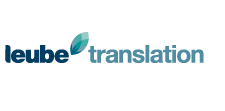Workshop “Medical translation:
The anatomist’s view. Anatomy V+VI”
The anatomist’s view. Anatomy V+VI”
This two-day workshop was the third part of the four-part series on human anatomy. The workshops were divided into a morning lecture on anatomy and clinical aspects and translation workshops (German–English/English–German) in the afternoon.
Prof. Rudolf Leube of the University of Mainz presented an anatomical system during the lecture component. The lectures covered both the anatomy of the respective system and the relevant medical terminology. Lectures were accompanied by PowerPoint presentations, models and anatomical specimens.
The translation workshops, which were closely coordinated with the content of the morning lectures, were facilitated by experienced university lecturers. They were offered in the language combinations German–English or English–German and focused on texts on the pathology, diagnosis and therapy of the systems presented in the lectures. Relevant reference material and dictionaries were presented and used during the workshops and internet resources discussed.
The workshops were presented in two-day units, focusing on one anatomical system per day.
– Anatomy I: Musculoskeletal system
– Anatomy II: Cardiovascular system
– Anatomy III: Digestive system
– Anatomy IV: Respiratory system
– Anatomy V: Nervous system
– Anatomy VI: Endocrine system
– Anatomy VII: Urogenital system
– Anatomy VIII: Immune system
Anatomy I+II was presented in March 2007, Anatomy III+IV in October 2007 and Anatomy VII+VIII in September 2008.
Target group
Translators (G–E, G–E) who have already worked with medical texts or who would like to add this specialization.
Workshop facilitators and instructors
Renate Chestnut
earned her translation degree (Diplom-Übersetzerin) in English and French at the University of Heidelberg. After working at the translation department of a contract research organization for four years, she and her husband moved to California, where she has been working as a freelance translator for over 25 years. Over the years, Ms. Chestnut increasingly specialized in biomedical translation, which constitutes nearly 90% of her translation work today. In addition to her work in translation, revising and quality assurance, Ms. Chestnut has been an adjunct professor at the Monterey Institute of International Studies for over 10 years, where she teaches seminars on technical and scientific translation from English into German.
Dr. Karen Leube
a native of Pennsylvania, is a freelance translator and translator trainer. She was on the faculty of the University of Heidelberg's Institute for Translation and Interpreting from 1994 to 2004, where she offered courses on biomedical technology in cooperation with local hospitals and research institutions, in addition to numerous courses focusing on German–English translation, translation theory, and translating as a profession. She has been the project manager for the Pachyonychia Congenita project (Salt Lake City) since November 2004 and teaches continuing education courses for translators and interpreters. Her translation of Thomas Häusler’s Gesund durch Viren (Viruses vs. Superbugs) was published in May 2006.
Prof. Rudolf Leube
joined the faculty at the Institute for Anatomy and Cell Biology at the University of Mainz in 1996. Prior to this appointment, he was employed at the German Cancer Research Center (DKFZ) in Heidelberg and was a lecturer at the University of Heidelberg’s Institute for Anatomy. Prof. Leube’s teaching covers all aspects of human anatomy, including cell biology, histology and gross anatomy. Prof. Leube earned the University of Mainz’s medical school’s award for outstanding teaching in 1998. He also heads a lab for molecular biology supported by a number of different grants. Prof. Leube has been appointed to head the Institute for Anatomy and Reproductive Biology at RWTH Aachen University in 2008.
Rüdiger Rupp
was born on May 14, 1969. He studied engineering with a focus on biomedical technology at the University of Karlsruhe, completing his degree in 1994. Mr. Rupp was employed at the Institute for Biomedical Technology and Biocybernetics (Prof. G. Vossius) at the University of Karlsruhe for two years. He has worked at the foundation Orthopedic University Hospital in Heidelberg (Prof. H. J. Gerner) since 1996, where he is in charge of research for the Department of Orthopedics II. Mr. Rupp is completing his Ph.D. in this department. His chief interests include the introduction and establishment of engineering competence in clinical areas, with a special focus on the functional rehabilitation of patients with spinal cord injuries. He develops electrostimulation systems for the upper extremity to restore hand and finger function lost due to spinal cord injury, referred to as grasping neuroprostheses. In addition, he works intensively on the development, realization and clinical application of innovative locomotion training machines for improving walking capacity of incompletely quadriplegic patients and to offer patients who have recently been paralyzed adequate mobilization therapy in the weeks following the trauma. Mr. Rupp is also working to expand and develop instrument-based measuring techniques to objectively compare the impact of various treatments on different problem areas of patients with spinal cord injuries. He is a member of the Institute of Electrical and Electronics Engineers (IEEE), the International Functional Electrical Stimulation Society (IFESS) and the Verein Deutscher Elektrotechniker (Association of German Electrotechnicians, VDE).
Seminar held April 5-6, 2007 in Heidelberg:
Workshop “Medical translation: The anatomist’s view. Anatomy V+VI”
Anatomy V (April 5, 2007):
General topic: Nervous system
Focus: Structural and functional arrangement of the spinal cord
Objectives:
– General overview of anatomically defined segments of the central and peripheral nervous system
– Basic introduction to the microscopic structure of the nerve cells
– Introduction to the structure and function of the spinal cord
Anatomy VI (April 6, 2007):
General topic: Endocrine system
Focus: Anatomy and function of the hypothalamus-pituitary system
Objectives:
– Overview of the endocrine glands and their functions
– Introduction to the position of the endocrine glands in the body
– Basic introduction to neuroendocrine differentiation



